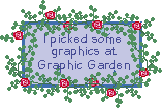| Hand
Quilting-- Hand quilting is the process of placing stitches through the quilt top, batting and backing to hold them together. While it is a functional process, it also adds beauty and loft to the finished quilt. To begin, thread a sharp between needle with an 18" piece of quilting thread. Tie a small knot in the end of the thread. Position the needle about 1/2" to 1" away from the starting oint on the quilt top. Sink the needle through the top into the batting layer but not through the backing. Pull the needle up at the starting point of the quilt design. Pull the needle and thread until the knot sinks through the top into the batting. Some stitchers like to take a backstitch here at the beginning while others prefer to begin the first stitch here. Take small, even running stitches along the marked quilting line. Keep one hand positioned underneath to feel the needle go all the way through to the backing. Tips and Tricks
Machine
Quilting-- Prepare the quilt for machine quilting in the same way as for hand quilting. Use safety pins to hold the layers together instead of basting with thread. Presser-foot quilting is best used for straight-line quilting because the presser bar lever does not need to be continually lifted. Set the machine on a longer stitch length (three or eight to 10 stitches to the inch). Too tight a stitch causes puckering and fabric tucks, either on the quilt top or backing. An even-feed or walking foot helps to eliminate the tucks and puckering by feeding the upper and lower layers through the machine evenly. Before you begin, loosen the amount of pressure on the presser foot. Special machine-quilting needles work best to penetrate the three layers in your quilt. Decide on a design. Quilting in the ditch is not quite as visible, but if you quilt witht he feed dogs engaged, it means turning the quilt frequently. It is not easy to fit a rolled-up quilt through the small opening on the sewing machine head. Meander quilting is the easiest way to machine-quilt--and it is fun. Meander quilting is done using an qpplique or darning foot with the feed dogs dropped. It is sort of like scribbling. Simply move the quilt top around under the foot and make stitches in a random pattern to fill the space. The same method may be used to outline a quilt design. The trick is the same as in hand quilting; you are striving for stitches of uniform size. Your hands are in complete control of the design. If machine-quilting is of interest to you, there are several very good books available at quilt shops that will help you become a successful machine quilter. (if you don't want to go all the way to the store! go to my bookstore that is affiliated with Amazon Books! just click here.) Tied Quilts, or Comforters-- If a top will be tied, choose a thick, bonded batting--one that will not separate during washing. For tying, use pearl cotton, embroidery floss, or strong yarn in colors that match or coordinate with the fabrics in your quilt top. Decide on a pattern for tying. Many quilts are tied at the corners and centers of the blocks and at sashing joints. Try to tie every 4"-6". Special designs can be used for tying, but most quilts are tied in conventional ways. Begin tying in the center and work to the outside edges. To make the tie, thread a large needle with a long thread (yarn, floss or crochet cotton); do not knot. Push the needle through the quilt top to the back, leaving a 3"-4" length on top. Move the needle to the next position without cutting thread. Take another stitch through the layers; repeat until thread is almost used up. Cut thread between stitches, leaving an equal amount of thread on each stitch. Tie a knot with the two thread ends. Tie again to make a square knot. Trim thread ends to desired length.
|
||||
Back  Next Next View Guestbook Sign  |
